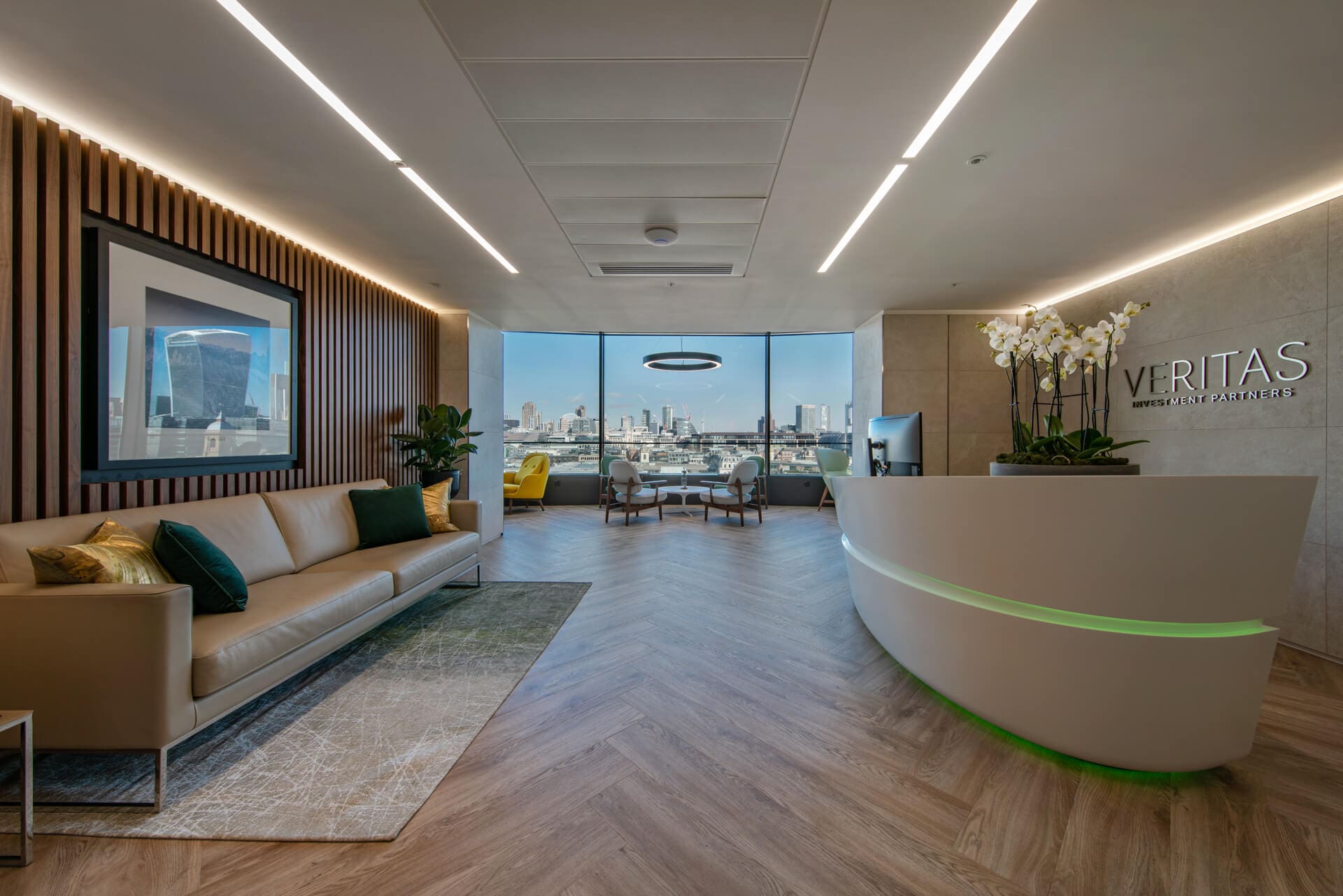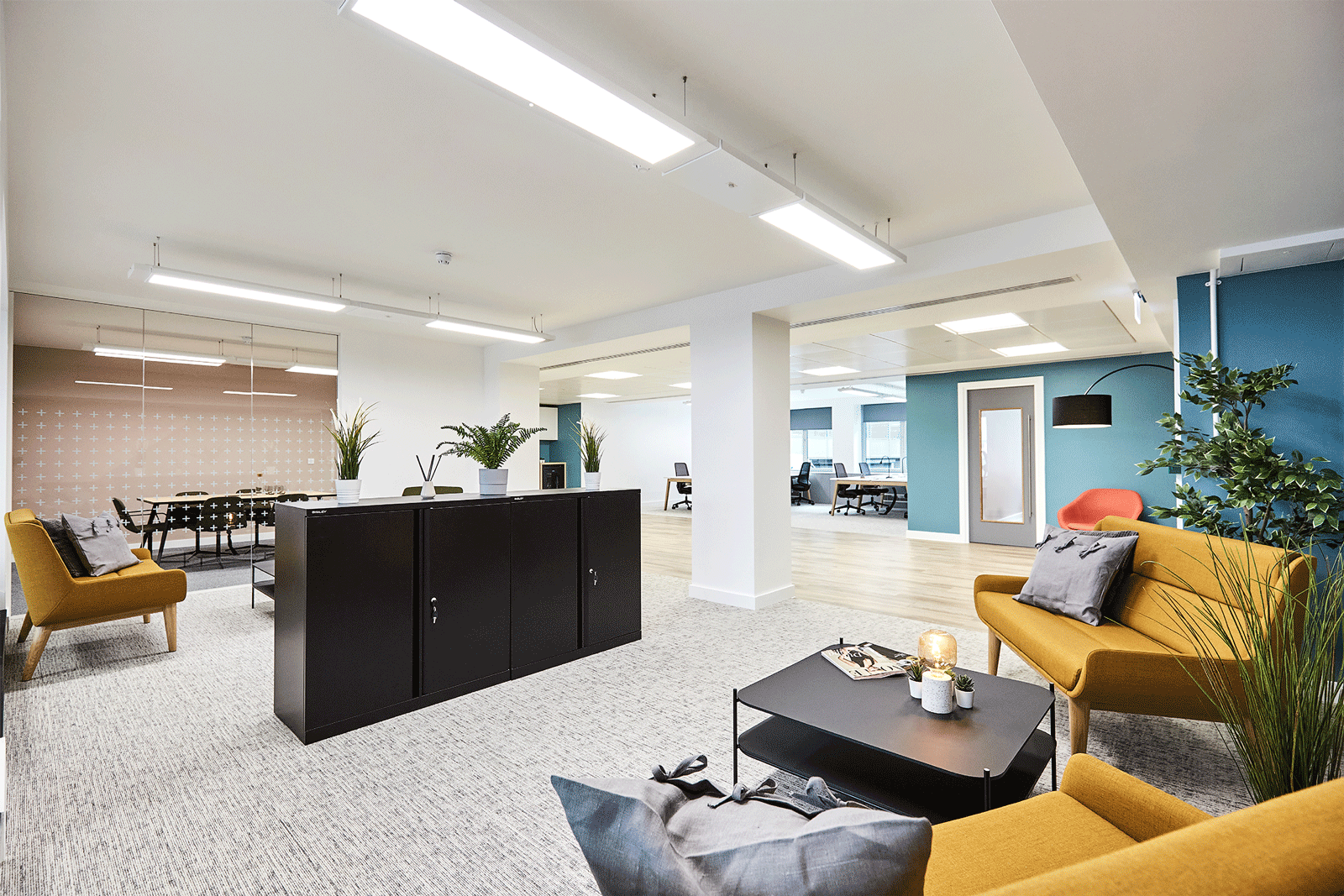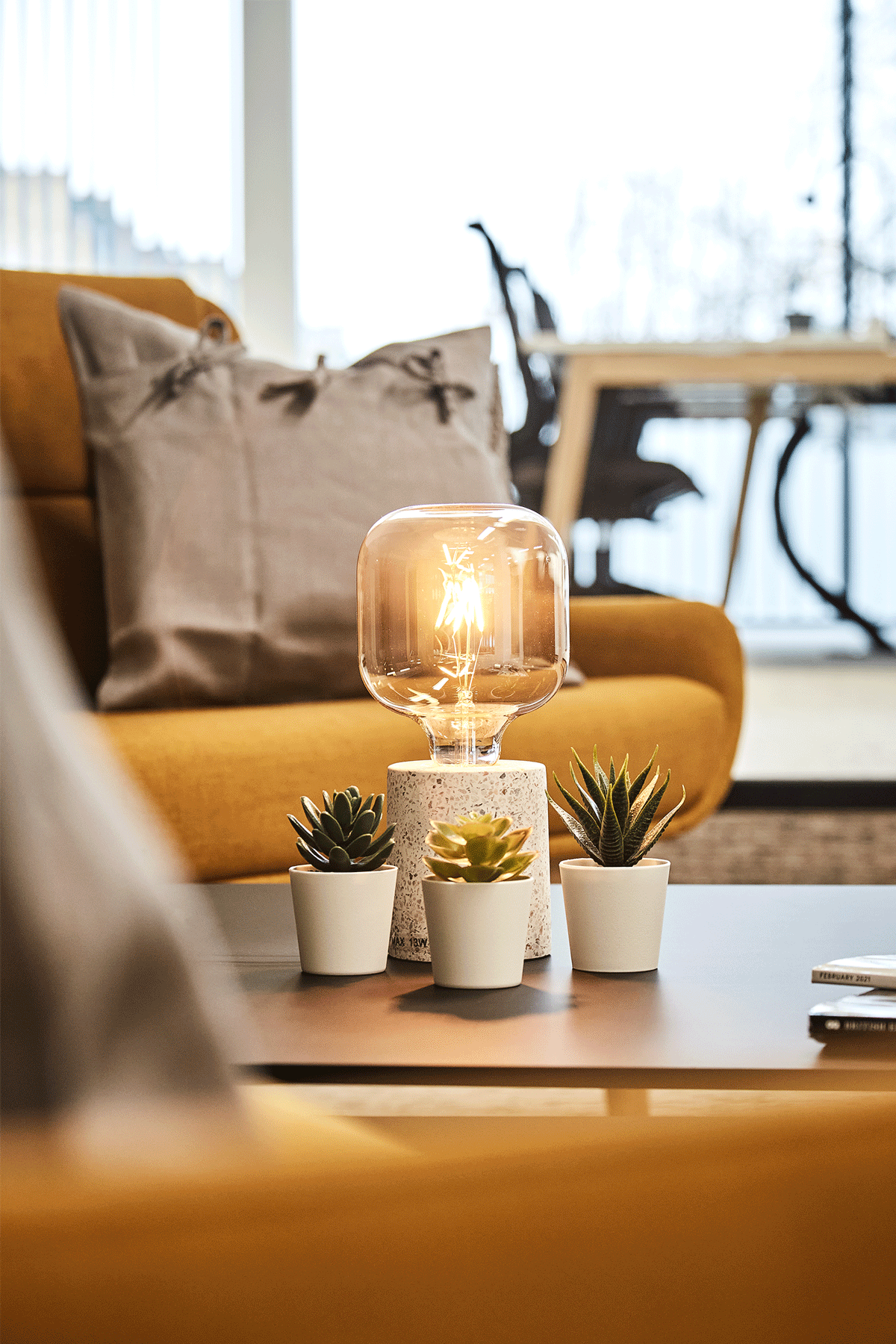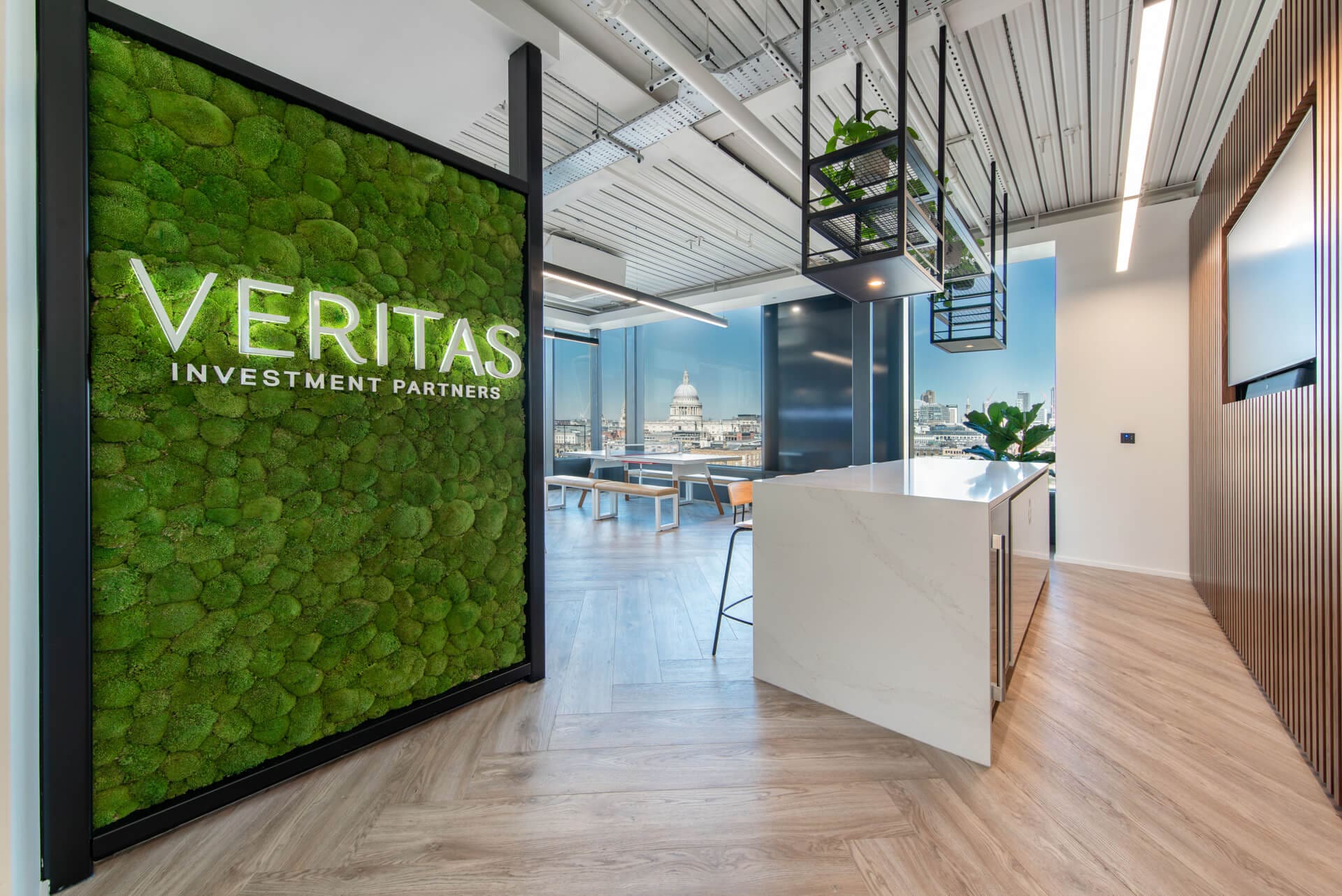An Interview with Leeson Medhurst, Head of Strategy, Peldon Rose
The whole subject of the Workplace has been put under the spotlight, as organisations navigate a new chapter, and look at new ways of working. The pandemic and sudden shift to homeworking have meant that for many it is time to take stock and reflect on what comes next for them and weigh up options and make changes that will potentially improve their success and at the same time attract and retain the best talent. It is an exciting time, but for some overwhelming, with so many aspects to consider.
I met up with Leeson Medhurst, Head of Strategy, for workplace design expert Peldon Rose, to ask him his informed views and thoughts on this hot topic and find out how he has been helping clients and what his clients are experiencing. Leeson has been in the industry for over 20 years, with a particular focus on the area of agile and flexible working…
Q: How have the events of the past year shifted our working style and blurred the lines further between our work and home lives?
A: The reality is that our working lives have changed dramatically and quickly since March last year, most of us were sent home and had to work from there with no notice. For some this was easy, for those that already had the facilities to work from home and were already working from home some of the time, they were able to make this transition successfully, but for others, this was a lot more difficult. The reaction time for most businesses was dramatic they managed to mobilise this aspect quickly.
In the past we had 3 defined parts to our day; work, social time, and sleep, during lockdown this was no longer the case. For many there was also a sense of anxiety and a fear that they needed to prove their worth to their boss, to show that they were being effective and productive. Many people started to work longer hours which is not healthy in the long term.
This is not something you would do in a traditional office setting, where your day would be more structured, and you would leave the office a set time, probably commute and switch off before arriving home. In lockdown, this structure disappeared, and people started to not switch off, it was too easy to go back to the computer again later in the evening blurring the lines of work and home.
Q: For some working from home has harmed their wellbeing and mental health yet for others it has been a blessing in disguise. How can we now strike a balance between the two when considering the return to the workplace?
A: One benefit of working from home is having more control over our lives, more time in the morning and at the end of the day. This was a novelty factor for many of us at first, we suddenly had some extra time to do other things, like having breakfast with our family, running, or exercising when we wanted to. People have enjoyed the choice and flexibility, for example being able to do the school run, run errands, and attend appointments, which is much easier to fit in when you are working from home and has made work-life balance easier to manage. People want choice and flexibility.
I do believe that home life should be sacred and respected. Work has its place and home has its place, and we need to have downtime and need to relax, it is essential for our wellbeing. Richard Branson once famously said “happy employees = happy clients = happy shareholders” and it is very true.
If we are happy, we are our performance is going to be better.
Q: How will what we’ve gone through shape office design?
A: Well, in terms of space, it’s not going to change office design all that much. One question that has come up is that clients will ask – ‘can we now have less office space now?’. The answer to this is that you are still going to need your office space, but you might now want to use it differently. If you are looking at a simple linear layout with desks, it is easy to fit that in.
But, if you want to use your office space for more collaborative work, which is likely to be a preference and a requirement now, you need the space to do this. For example, to give the flexibility for a and 2/3, 3/2 model we need arenas to be designed to allow for this new way of working, offering a different typology.
With areas to catch up and generate ideas, blended spaces with phone booths, high and low tables, and seating spaces. To do this, you need more space. The real estate conversation is not to go into decline, but rather to evolve into a more hospitality-led type of space. This kind of working energises people and improves the experience of work, elevating it to improve communication and results. It’s also important that it works for all personality types and working styles, introvert, extrovert, quiet critical work, and creative work.
The two biggest costs to an organisation are your staff and your property but equally, they are your biggest assets so you need to address how you get the best out of them and support them.
Q: We know that many people are anxious about returning to the workplace. Can we improve wellbeing, and help to alleviate anxiety through Workplace Design?
A: By designing spaces that are attractive and include elements that are proven to boost mood and relaxation, for example, by adding biophilic elements into your design, like green plants and nature-based colour palettes. Opt for a “resi-mmercial” style with more soft furnishings, some sofa seating, and by providing some private working options to allow people to experience some of the quiet time they found easy to get at home, and by offering flexibility to work from or the office and home some of the time.
If you want to begin encouraging people back to the office, you need to think about what the benefits are for them. People can work easily from home, so why do they want to go back? I am working on helping organisations with this by creating better and more enticing environments to welcome people back to the office space.
Q: How has the pandemic affected the client brief? How do you help clients to assess what they need next and design the right space for their organisation?
A: You need to start at the beginning. I ask the Senior Leadership Team – what do you want from your business. Much of the commentary of the past few months has been through the optic of the user. But what does the company need? If a company has evolved over say 100 years as a brand and a culture, this cannot and may not want to change overnight. We will have those deep conversations; where are you now? Where do you want to get to? And then discover what the process is that is going to help you get there.
When we know what level of flexibility is right for the business, the space becomes the enabler to support the organisation. The right space, designed to fit the need, will support that business, its culture and vision.
Some businesses have made the decision that they want to be a place-based organisation, we help them navigate that, with the understanding that the decision means they cannot be everybody’s friend. They will need to help to think through those conversations about which teams need to be in at the same time, and ensuring it is thought through in detail, for example, have an IT infrastructure in place to support that.
A lot of data needs to be gathered and the right questions asked first before we can arrive at the best solution, typically it takes 8 weeks to complete this process. If you are looking to move, you should start thinking about your real estate strategy around one year ahead of your lease break.
My overarching advice to organisations is not to be afraid of agility flexibility. It is not new; we have been talking about this for a long time and we have a lot of experience and we can help you with this. We have many case studies which we can draw on from our existing clients. It is something that is 20 years old – we can absolutely help you harness a remote workforce and design a workplace that works for your organisation.









